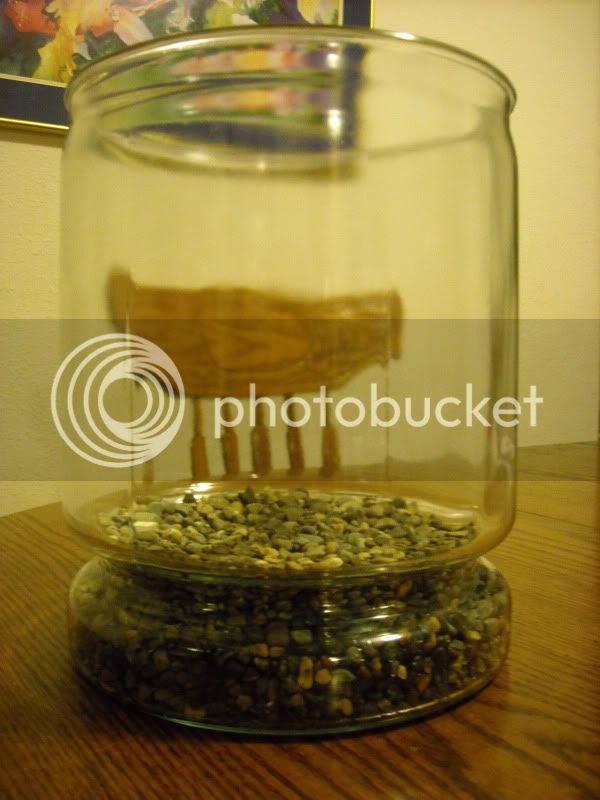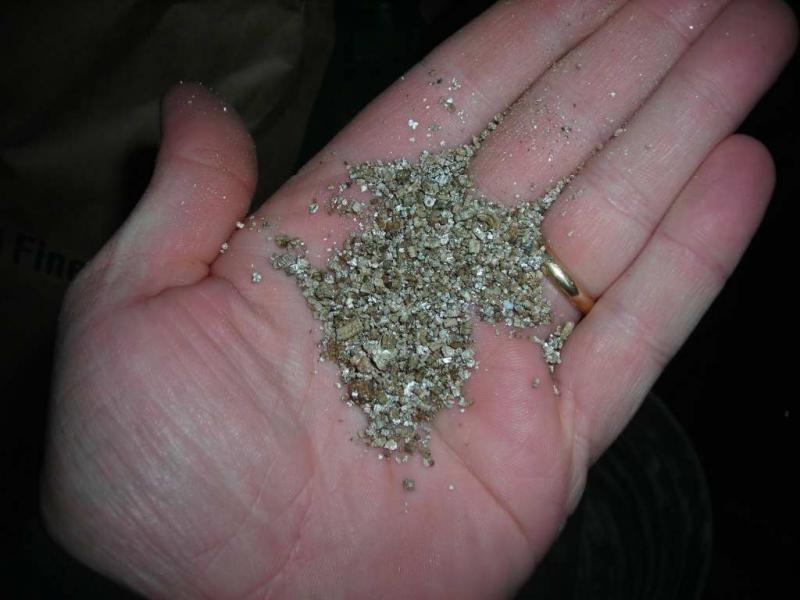AmandaLynn
Well-known member
Would just gravel alone work as a substrate if you're not using live plants?

Yes, James, I seem to remember that on one occasion, your beloved had to rescue some of yr nymphs from a watery grave! Nothing like learning from experience!Moistened paper towels should work a treat. These retain moisture effectively & prevent small nymphs from drowning (also applicable to Drosophila). Or are you going for something a little more ornamental? Although I've never tried it, perhaps someone here can throw in their two cents worth about sphagnum moss.











No it would be for an adult Ph. paradoxa. I have a couple of different glass bowls that I like the look of but, the bases of them are not an ideal shape. So I wanted to raise the base up so the crickets and other feeders can't hide so well, using gravel with paper towel or sphagnum moss on top and I'm wondering if the paper or moss is really necessary.You might want to consider putting a layer of peat moss under the gravel. This will retain more moisture and higher humidity and eliminate the possibility of stagnant water accumulating under the gravel, though most will evaporate. You don't plan on keeping tiny nymphs in this enclosure, do you? If water pools in the gravel interstices, the silly little things might drown themselves.


Ghosts, P. paradoxa come from Madagascar and although there is a dry season there from spring until fall, I don't think that the humidity falls below 70%RH even inland and in the low 80% on the coast.Hello! Phyllocrania paradoxa lives in dry environment I think. A light vaporization per week should be enough! What think about it? It is not like Hymenopus coronatus!In France, we often use vermiculite as substrate!
On the other hand, this species evolved with difficulty on the paroies out of glass!
Bests regards, François!
Hello,Ghosts, P. paradoxa come from Madagascar and although there is a dry season there from spring until fall, I don't think that the humidity falls below 70%RH even inland and in the low 80% on the coast.I'm not sure what your last sentence means. Are you saying that this mantis has difficulty in climbing glass walls?
Yes this is always the problem when a relatively small area has different climates. The humidities that I gave, somewhere above, were for the capital, Antanarivo in the center of the island and a seaport on the east coast. I cannot imagine the benefit of a desert species looking like a leaf, though, and even in Toliara, in the southwest (they are simply villages down there, you don't wanna go!) though the humidity is about 30%RH at noon at this time of year, it is about 80% during the humid, sweaty nights. I have always kept the humidity up for this species, though without doing anything more than regular mistings and have had no problems.I had always assumed that they were a tropical species. But apparently the south west regions of Madagascar are hot and dry. I don't know what areas P. paradoxas are found there, if they are found in the south west then I guess it makes sense to raise them in dry conditions. I've been keeping the humidity pretty high in their enclosures so far and haven't had any problems with it yet though, so maybe they are just an adaptable species that can live in diverse climates.... I don't really know.I like the vermiculite! It looks a lot nicer than paper towels for sure and retains moisture much better than gravel! I think I'm going to have to try it. Thanks for the suggestion, Francois! As for the glass container, they pretty much hang out on the lid of whatever enclosure they are in, and I've added some sticks for her to climb on as well.
There is no 'good or bad' species but Phyllocrania are definitely up there in the favorites category for many people. On the whole climate of where they come from thing it's a good idea to know exactly where the stocks came from but I don't think that's possible anymore with this species and some others since people import wild collected oothecae and hatch them out.I'd love to get some ghosts one day. Good species no?
You should, they are pretty cool little creatures.I'd love to get some ghosts one day. Good species no?
You should. I have 7 and each is a different color, not to mention they are acrobatic.I'd love to get some ghosts one day. Good species no?
Enter your email address to join: